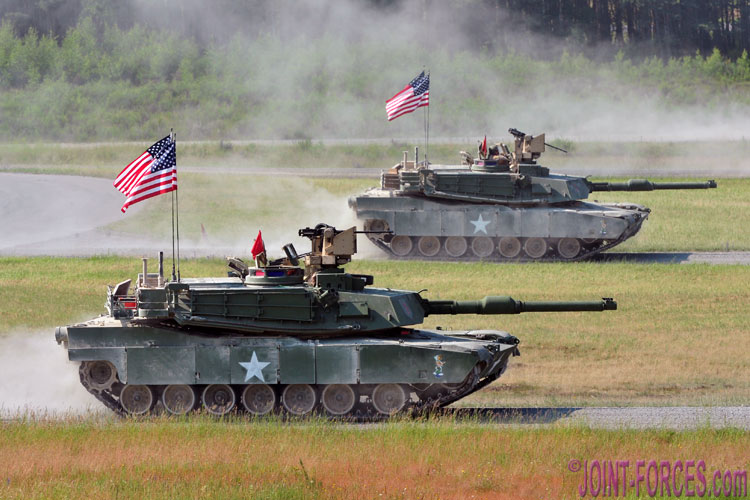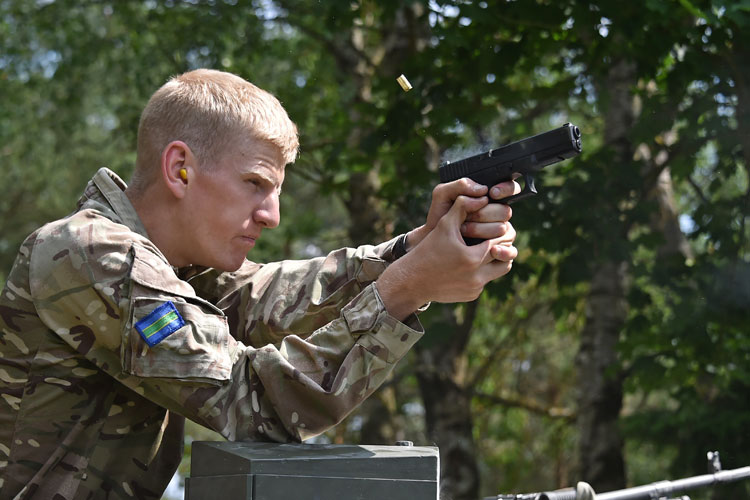The annual Strong Europe Tank Challenge (SETC) is a kind of revival of the famous Cold War era Canadian Army Trophy (CAT) tank live fire competitions, of which the last was conducted in 1991, writes Carl Schulze.
Co-hosted by the 7th Army Joint Multinational Training Command of US Army Europe and the Bundeswehr, the first Strong Europe Tank Challenge was conducted in 2016 and won by the German team from Gebirgs panzer bataillon 8, equipped with Leopard 2A6M+ Main Battle Tanks. In 2017 the competition was won by the team of Austria provided by Panzer bataillon 14 and equipped with Leopard 2A4 Main Battle Tanks.
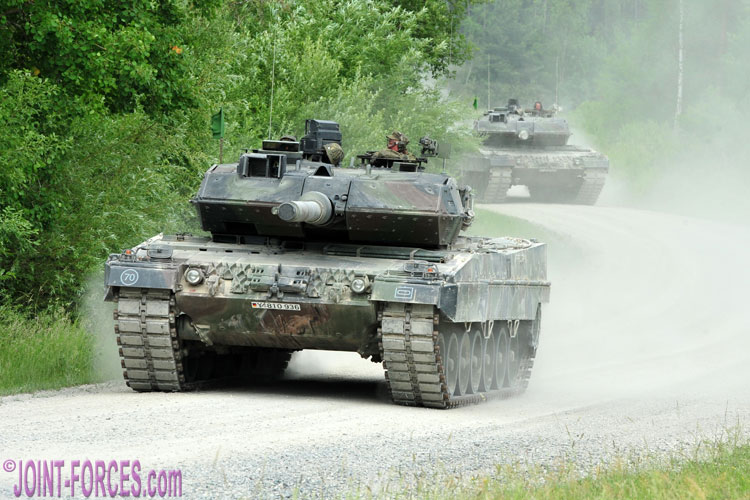
Germany was the winner of the Strong Europe Tank Challenge 2018 – Panzer bataillon 393 fielded Leopard 2A6 MBTs. [© Carl Schulze]
This year’s Challenge saw the participation of platoon-size teams from eight nations, including five NATO and three Partnership for Peace (PfP) countries; namely Austria, France, Germany, Poland, Sweden, Ukraine, the UK and the USA.
- The Austrian team was provided by Panzer bataillon 14, the only tank battalion of the Bundesheer, which took part in the competition with the Leopard 2A4 main battle tank.
- The French team was provided by a platoon from the 1er Régiment de Chasseurs, equipped with Leclerc MBTs.
- The German team was provided by Panzer bataillon 393, equipped with Leopard 2A6 MBTs.
- The team from Poland was provided by a tank battalion from 34 Brygada Kawalerii Pancernej, equipped with Leopard 2A5.
- The team from Sweden was provided by the Skaraborg Regimentet, equipped with Stridsvagn 122 (another variant of the Leopard 2).
- The team from Ukraine was provided by the 14-та окрема механізована бригада (14th Independent Mechanised Brigade) equipped with T-84 MBTs.
- The UK team was provided by The Queen’s Royal Hussars, equipped with the Challenger 2 main battle tank.
- The US team was provided by the 2nd Battalion, 70th Armored Regiment, equipped with M1A2 SEP (V2) Abrams MBTs.
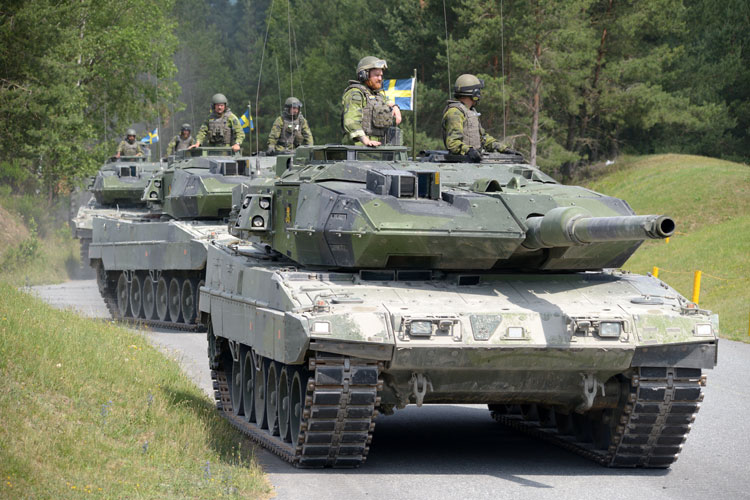
The Swedish team was provided by the Skaraborg Regimentet equipped with Stridsvagn 122 [© Christoph Koppers/US Army]
As part of the competition the participating teams had to score at twelve different stands and perform the Shoot-Out:
- Stand 1: Offensive Operation; platoon size attack live fire tank shoot – maximum of 500 points possible.
- Stand 2: Defensive Operation; platoon size live fire tank shoot – maximum of 500 points possible.
- Stand 3: Tank Recovery under Chemical, Biological, Radiological and Nuclear (CBRN) conditions; crews had to recover a damaged tank under NBC conditions, wearing personal protection equipment – maximum of 100 points possible.
- Stand 4: Medical Evacuation (MEDEVAC) and Battle Damage Assessment and Repair (BDAR); crews had to provide first aid to a wounded soldier and repair damage to the running gear, which meant they had to split the vehicle track and assemble it again – maximum of 100 points possible.
- Stand 5: Precision Driving; the MBTs had to be driven around a pre-marked course and navigated around obstacles – maximum of 100 points possible.
- Stand 6: Call of Fire; the teams had to call for indirect fire support and direct it – maximum of 100 points possible.
- Stand 7: Vehicle Identification; the crews had to identify vehicles of NATO and non-NATO nations – maximum of 100 points possible.
- Stand 8: Range Determination; crews had to estimate the distance to targets without using a laser range finder – maximum of 100 points possible.
- Stand 9: Pistol Shooting; maximum of 100 points possible with points given for accuracy and time.
- Stand 10: Reporting; crews had to identify and report targets in an urban environment – maximum of 100 points possible.
- Stand 11: Obstacle Course; maximum of 100 points possible.
- Stand 12: Tankers Olympics; special physical fitness and skill test during which the crews had to transport tank-related items such as road wheels, towing cables and ammunition from one point to another – maximum of 100 points possible.
- Shoot Out ; Evaluation of the effectiveness of the tank platoon to neutralise given targets within a limited presentation time – maximum of 400 points possible.

Here the Ukrainian team can be seen performing at Stand 4: Medical Evacuation (MEDEVAC) and Battle Damage Assessment and Repair (BDAR) – note the T-84 MBT [© Carl Schulze]
At the Offensive Operation stand the teams could, for example score a total of 500 points. For every vehicle target hit with the MBT’s main gun 10 points were given (240 total possible), every group of dismounted infantry hit by machine gun fire scored 5 points (60 total possible), for every tank gun round returned another 5 points could be scored (80 total possible), while a total of 120 additional points could be scored for tactics.
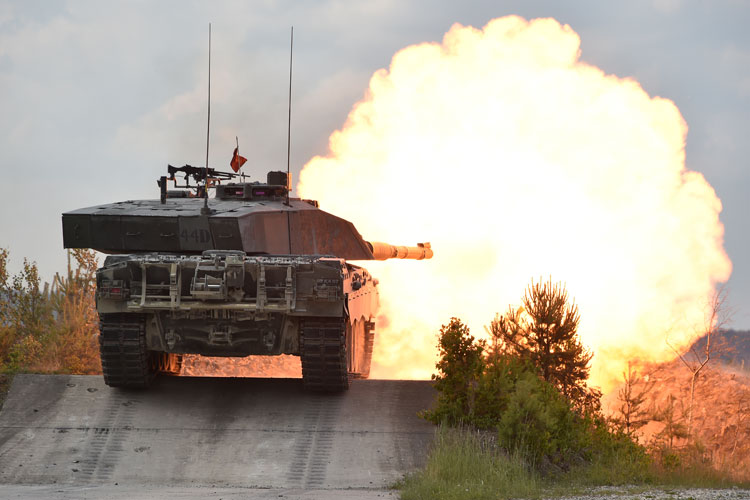
A Challenger 2 MBT of The Queen’s Royal Hussars engages a target with its 120mm tank gun during the SETC 2018 [© Gertrud Zach/US Army]
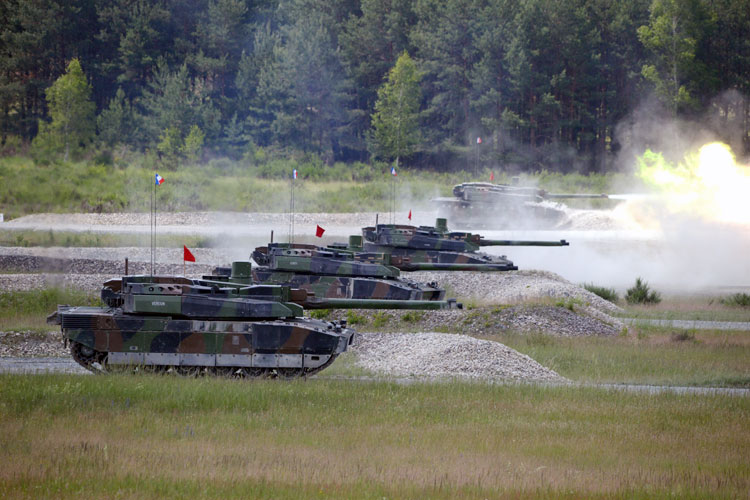
French Leclerc MBTs of the 1er Régiment de Chasseurs perform at Stand 2: Defensive Operation [© Christoph Koppers/US Army]
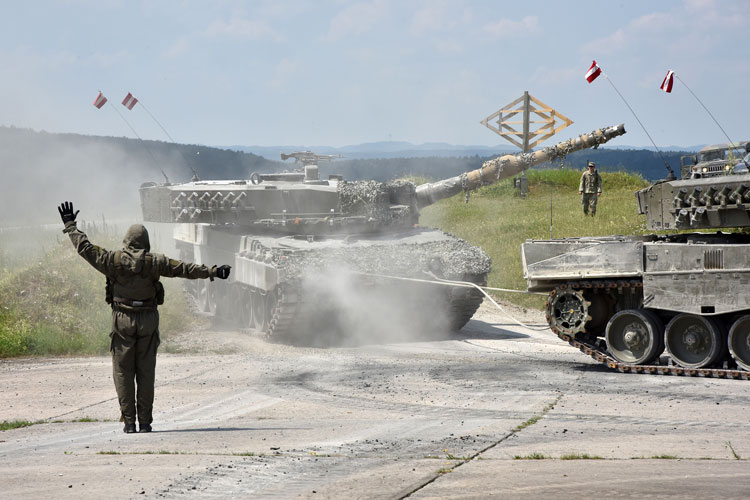
Austrian team with Leopard 2A4 MBTs seen at Stand 3: Tank Recovery under Chemical, Biological, Radiological and Nuclear conditions [© Lacey Justinger/US Army]


